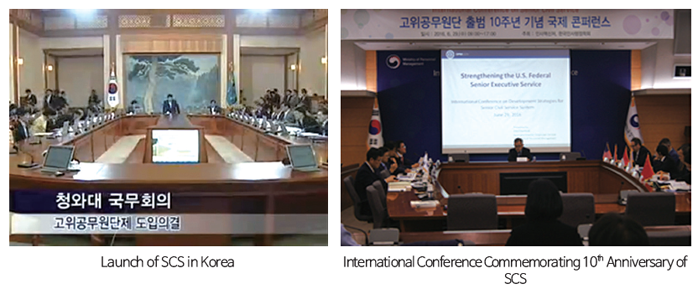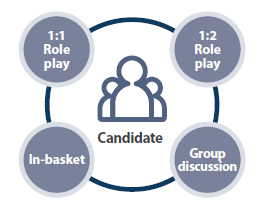The government of the Republic of Korea introduced the Senior Civil Service (SCS) in 2006, to place highranking officials at the deputy minister or director-general levels in the right place at agencies across government, beyond partitions between ministries, and to encourage openness and competition between the civil service and the private sector, as well as among the ministries.
History of the Senior Civil Service
Currently, about 1,500 senior civil servants are classified and managed as the SCS. Some of these posts are open to the private sector to encourage excellent experts to work in the civil service. Also, through a job position system, the government is encouraging inter-ministerial competition among public officials in different ministries.
A candidate for the SCS must first go through a strict assessment procedure at the Assessment Center. Through group discussion and role play, an assessment is made as to whether a candidate has the leadership and capacities required of senior civil servants. In the next step, those candidates who pass the Assessment Center are subject to personnel screening conducted by the Appointment Screening Committee of the Ministry of Personnel Management, and successful candidates who pass this screening are finally selected for the posts to be filled in the next appointment period.
Senior civil servants are paid a differential remuneration according to the grade of duty and performance evaluation results. Senior civil servants with poor performance are subject to qualification screening to determine whether they should continue to perform duties as senior civil servants.
REGULATIONS ON THE PERSONNEL MANAGEMENT OF THE SENIOR CIVIL SERVICE CORPS

About the Assessment Center
The Assessment Center was initiated with the introduction of the Senior Civil Service System in 2006, aimed at appointing the right person in the right position through more objective and fair evaluation methods. The structure of the Assessment Center is based on multiple assessors and multiple simulation exercises. Multiple assessors observe one assessee’s problem-solving capacity through multiple exercises in the background of real working conditions and complicated policy environments.
The Korean Competency Model is composed of six competencies (problem recognition, strategic thinking, change management, performance-orientation, customer satisfaction, coordination and integration). Each competency is measured by four simulation exercises (1:1 Role Play, 1:2 Role Play, In-Basket Exercise, Group Discussion).
Through this systematically designed Assessment Center, the Korean government tries to appoint more competent and capable senior government officials who play a pivotal role in the policy decision-making process.

